Aurora Borealis icebreaker
Cruise line
Icebreakers
Specifications of Aurora Borealis icebreaker
| Year of build | 2030 new ship |
| Class | diesel icebreaker (Ice class PC1) |
| Building cost | EUR 500 million (USD 670 million) |
| Propulsion power | 27 MW / 36208 hp |
| Speed | 15 kn / 28 km/h / 17 mph |
| Length (LOA) | 200 m / 656 ft |
| Beam (width) | 49 m / 161 ft |
| Crew | 120 |
Aurora Borealis icebreaker Review
Review of Aurora Borealis icebreaker
Aurora Borealis icebreaker (Aurora Slim) is a European project aimed at building the world's largest icebreaking vessel. The larger version's building cost is ~EUR 800 million, while the smaller Aurora Slim version could cost ~EUR 500 million.
The project is a joint venture involving 15 participating companies and organizations from 10 EU nations. Once completed, the vessel will not only be the world’s largest icebreaker but also the first ship to combine three functions: an icebreaker (Polar Class 1 - the highest ice class), a seabed drilling platform, and a multi-purpose polar research vessel.
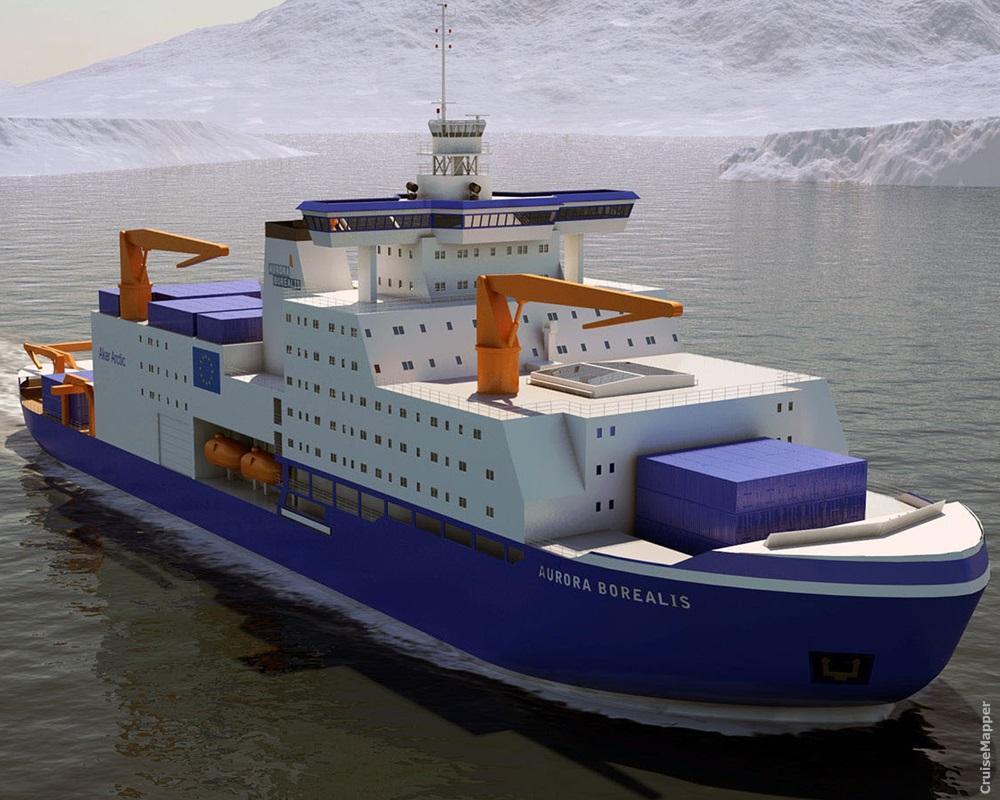
A unique feature of the vessel is its capability to conduct scientific deep-sea seabed drilling in ice-covered waters. With an expected operational lifespan of 35-40 years, the ship will undertake year-round scientific missions in the Arctic Ocean and along Antarctica’s continental shelf. It will operate independently, without requiring icebreaking support. Scientific fields served by the ship include Biology, Glaciology, Geology, Geophysics, Oceanography, Bathymetry, Meteorology, Atmospheric Physics, and Chemistry.
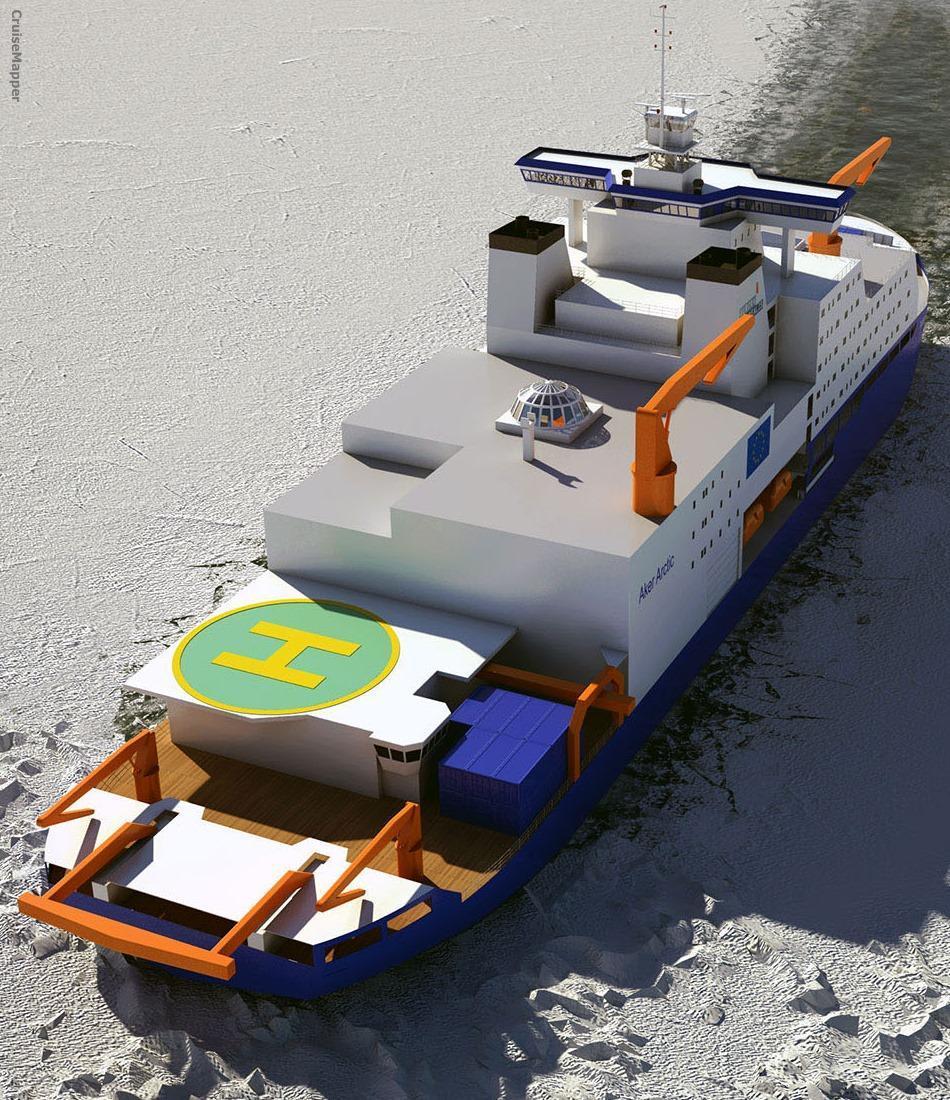
The project supports both the polar science community (for land and marine research) and the deep-sea drilling industry (mainly chartering the vessel in summer for Arctic seabed studies). Aurora Borealis will be operated by a consortium of partners and chartered to EU and non-EU member states.
- Planning began in 2002 under the European Science Foundation, coordinated by the European Polar Board.
- From March 2007 to January 2009, the project received EUR 5.2 million (USD 6.9 million) in funding from Germany’s Ministry for Science and Education. Final engineering was coordinated by the Alfred Wegener Institute (Polar and Marine Research) in Bremerhaven, Germany.
- The development phase ran from March 1, 2008, through February 28, 2012.
- The ship’s design was developed by Schiffko, the marine design division of Wartsila Corporation (Hamburg, Germany). The technical design was presented in December 2008 in Berlin, Germany by Schiffko (now Wartsila Ship Design) and the Alfred Wegener Institute.
Construction was initially planned for 2012, with the ship’s launch set for 2014. However, German support for the EUR 800 million (USD 1.07 billion) project was withdrawn in January 2009, causing delays and casting uncertainty over its future.
Aurora Slim Icebreaker
In 2010, Germany’s Council of Science and Humanities (Wissenschaftsrat) ended support for the original project. The design was scaled down to a more cost-effective vessel called "Aurora Slim", to be developed by Aker Arctic Technology Oy.
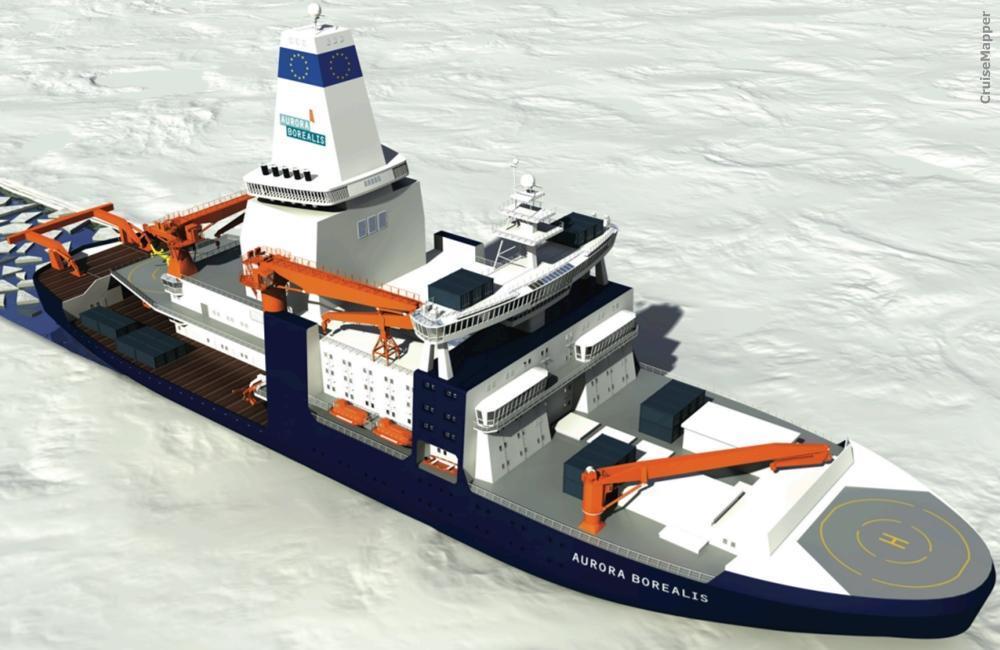
In March 2012, the Aurora Slim version was presented by Aker Arctic Technology, a marine engineering company headquartered in Helsinki, Finland.
- Estimated construction cost: EUR 500 million (USD 670 million), with operational costs estimated at EUR 36 million (USD 48 million).
- Aurora Slim features no fixed drilling rig; instead, it uses a mobile platform suitable for operations in shallower waters (up to 1 km / 3300 ft). The original design supported deep-sea drilling in waters over 5 km (16,400 ft) deep.
- Unlike the original's two moon pools, Aurora Slim has one. Its dynamic positioning system includes 3 Azimuth thrusters (15 MW each) and 2 bow thrusters (3.5 MW each). The original design had three propeller shafts (AC propulsion, 81 MW total) and six Wartsila retractable transverse thrusters (13.5 MW total).
- The original design's drilling rig was 85 m (279 ft) long (above keel) and had a 680-ton capacity.
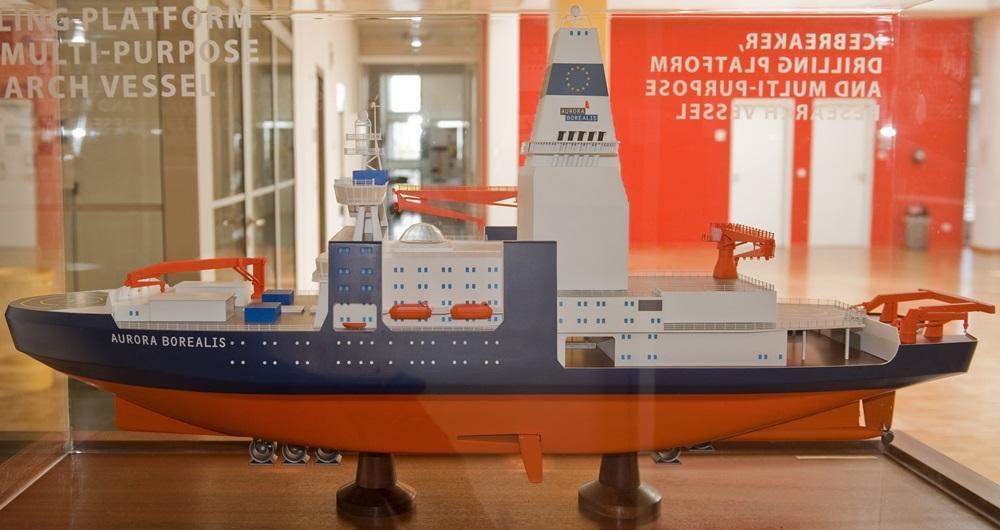
Participating countries and organizations in the project include:
- France – European Science Foundation, National Centre for Scientific Research
- Germany – Alfred Wegener Institute, Federal Ministry of Education and Research
- Italy – National Research Council, National Antarctic Research Program
- Russia – Arctic and Antarctic Research Institute
- Finland – Finnish Institute of Marine Research, Aker Arctic
- Netherlands – Netherlands Organisation for Scientific Research
- Norway – University of Bergen
- Belgium – National Fund for Scientific Research
- Bulgaria – Bulgarian Antarctic Institute
- Romania – Antarctica Romana Foundation
Aurora Borealis Icebreaker Vessel Details
The vessel is powered by eight marine diesel generator sets with a combined output of 94 MW. It also features emergency generators, a waste heat recovery system, and an exhaust gas cleaning system.
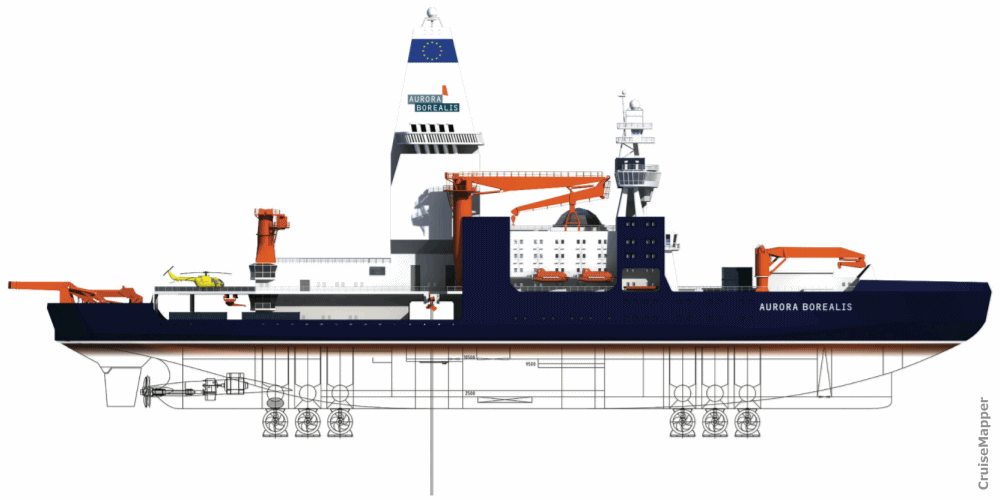
Aurora Slim’s diesel-electric propulsion includes 3 Azimuth thrusters (combined 45 MW) and 2 bow thrusters (7 MW).
- Hull: Twin-hull with sloped sidewalls for efficient icebreaking during dynamic positioning
- Anti-heeling system: Maintains balance when the vessel tilts
- Ice-strengthened propellers and an ice keel protect underwater equipment
- DWT: TBA
- Displacement: 65,000 tons
- Max Draught: 13 m (43 ft)
- Icebreaking capability: 2.5 m (8.2 ft) in both forward and reverse directions, speed 2–3 knots in drifting ice
- Ice class: PC1 (Polar Class 1 - highest)
- Endurance: 90 days
- Max speed: 15.5 knots (28.7 kph / 17.8 mph)
- Cruising speed: 12 knots (22 kph / 14 mph)
- Operating temperature: -30°C to +45°C
- Capacity: 120 (crew and scientists)
- Staterooms: 100 (80 single, 20 double cabins)
- Helipads: 2 landing decks, 1 hangar (space for 3 helicopters or mobile laboratories)
- Moon pools (original version): 2 — one for drilling, one for deploying submersibles. Each measures 7x7 m (23x23 ft)
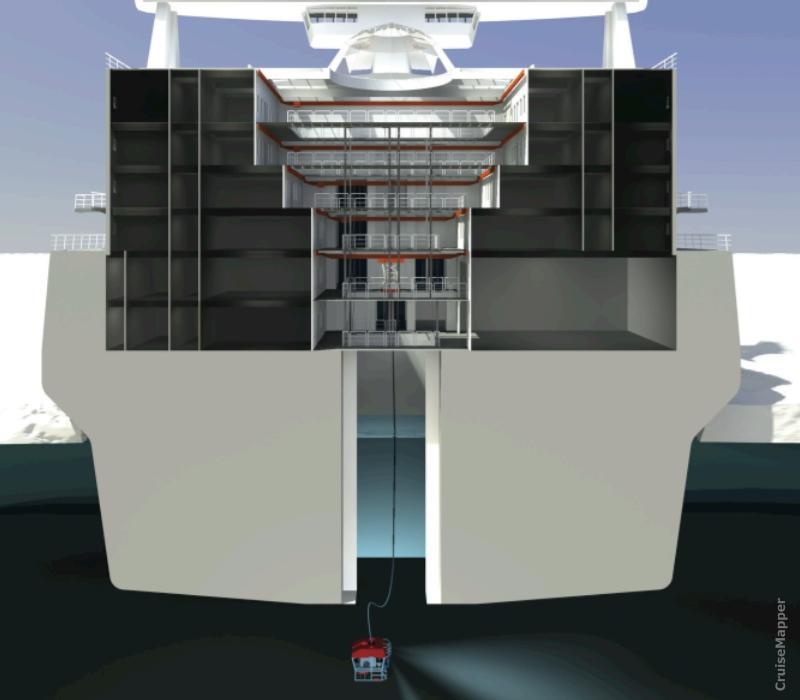
Note: In areas with limited AIS coverage, tracking the vessel may be impossible. Visit CruiseMapper’s Icebreakers hub to see the full list of icebreaking and research vessels and their current itineraries.





